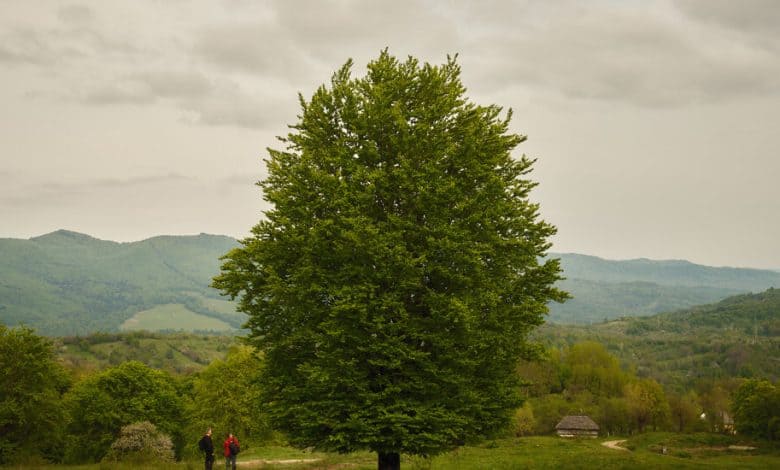‘The Trees Saved Me’

The story of the Forest of Immortal Stories begins not so long ago, in 2019, when Elena-Mirela Cojocaru, beloved wife of Ion Cojocaru, mayor of the hamlet of Nucsoara, died after a struggle with cancer. Mr. Cojocaru himself soon fell ill with a heart ailment; as a remedy his doctor told him to walk in the countryside, 6,000 or more steps a day.
Nucsoara and its 1,222 inhabitants reside on the forested slopes of the Carpathian Mountains in Romania. The Carpathians are a land of fog, fictional vampires and real-life wolves, as well as several thousand brown bears and roughly two-thirds of the remaining virgin forest in Europe.
Mr. Cojocaru had grown up in Nucsoara, but only as he walked the hills and ancient pastures did he notice the trees: beeches, phantasmagorically gnarled giants, some as old as 500 years.




The beauty and strength of the trees revived Mr. Cojocaru, and he felt as if they had adopted him. “The trees saved me,” he said recently.
Some ancient beeches resemble upturned brooms, hundreds of small branches rising abruptly from a thick trunk no taller than a person. The shapes embody local history. Until the region was declared protected, generations of villagers gathered firewood from the trees, pruning, or pollarding, the branches above arm’s reach.
“I would go to the forest to collect wood, flowers and food,” said Silvia Dan, 80. “Growing up here was like an oasis. The forest was a source of life for us, a way of making a living.”
Where the trees were pruned, new shoots sprouted, branched, grew and were trimmed again, year after year for centuries. The practice allowed the trees to continue bearing beech nuts, which the villagers fed to their pigs to fatten them up in autumn.
“The mightiness of these trees is mind-blowing,” said Christoph Promberger, executive director of Foundation Conservation Carpathia, a nonprofit organization that is working to create a national park in the region. Five thousand solitary secular beeches still grow around Nucsoara, the highest concentration in Europe. But logging and changing uses of the land pose a threat. Bark beetles are moving in, too.
Mr. Cojocaru and the nonprofit group began discussing a plan to protect the beeches and perhaps draw ecotourism to Nucsoara. Two thousand five hundred and forty-four trees were identified — Mr. Cojocaru chose 2,544 because it is the height in meters of Moldoveanu Peak, the highest mountain in Romania and a day’s hike from Nucsoara. Each was given a number plate, photographed through the seasons and marked on a map with its GPS coordinates. The trees are offered for adoption on a website — although as Mr. Cojocaru insists, the tree adopts the person, not the other way around.

Lidar scans of ancient beech trees from the region around Nucsoara.CreditCredit…Forest Design
At one point a team from Forest Design, a forestry firm in Brasov, came with hand-held scanners that use lidar, a laser technology, and generated three-dimensional images of many of the ancient trees, inside and out. Digitally captured, each tree appears as fully individual as a fingerprint, and scientists can precisely track its growth and change.




“We wanted to see how the trees evolve and move in time,” said Sergiu Florea of Forest Design.
So began the Forest of Immortal Stories.
For a modest fee, a person can attach their own story to a tree. When visited in person, the tree reads the narrative back through a QR code. Number 44 is Ana Maria Branza, a Romanian fencing champion who won her first national title at age 15.
Number 2224 is a daughter’s expression of gratitude on behalf of her mother who, in 1944 at age 16, “found refuge from the Nazis hidden among the ancient trees.”
Number 22 is a gift from one friend to another, a snippet of a poem by the Pakistani poet Faiz Ahmed Faiz: “Give some tree the gift of green again. Let one bird sing.”
Number 2544 has adopted Ion Cojocaru.
“I get a feeling of reciprocity,” Mr. Cojocaru said of the trees. “I learn from them. I get a sense that they are old men who are very wise and want me to do good.”
